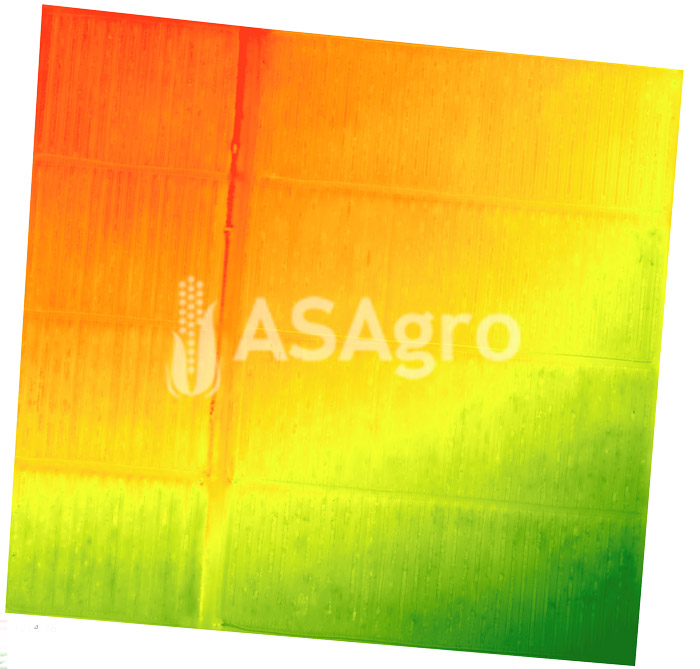Slope Of Land
Asagro Services
Benefits of measuring plant stress
Measuring the slope of land in agriculture offers several benefits that contribute to improved farm management and productivity. Here are some key advantages:
- Water Management: The slope of land affects water drainage and runoff patterns. By measuring the slope, farmers can design and implement effective irrigation systems, contour farming, or terracing techniques. This allows for better water distribution, reduces water runoff, and minimizes the risk of soil erosion. Proper water management helps optimize crop growth, prevents waterlogging, and conserves water resources.
- Soil Conservation: Measuring the slope helps identify areas prone to soil erosion. By understanding the land’s gradient, farmers can implement erosion control measures such as contour plowing, strip cropping, or constructing terraces. These practices help retain soil moisture, prevent nutrient loss, and protect the topsoil from being washed away. Conserving soil health and structure enhances crop productivity and sustainability.
- Crop Selection and Management: The slope of land can influence microclimates and soil characteristics. By measuring the slope, farmers can make informed decisions regarding crop selection and management practices. Different crops have varying tolerance to slope gradients, and understanding the land’s slope helps optimize planting techniques, nutrient application, and pest management strategies for specific areas.
Save
100 times faster than traditional methode
With just one measurement of the slope of your agricultural land, gain extraordinary insight and save resources in your consumption.

Best time to measure Slope of land
The best time to measure the slope of land in agriculture is typically during the initial stages of farm planning or land preparation. Ideally, it should be done before any major cultivation or construction activities take place. This allows farmers to make informed decisions regarding water management, soil conservation, and crop selection right from the start.
Additionally, it is beneficial to measure the slope of land after significant changes or modifications have been made to the landscape, such as terracing or contouring. This helps ensure that the desired modifications have been implemented correctly and are effectively addressing issues related to water drainage, erosion control, and overall land management.
Regular monitoring of the slope of land is also recommended, especially after heavy rainfall or extreme weather events, as these can impact the land’s slope and erosion patterns. By periodically assessing the slope, farmers can identify any changes or potential issues and take appropriate measures to maintain optimal land conditions.
An example of ASAgro's reports in the field of slope of land

In this image, the difference in colors indicates variations in slope in agricultural land.
1 of 1Frequently Asked Questions
How often should I measure the slope of my agricultural land?
The frequency of measuring the slope of agricultural land depends on various factors such as the size of the farm, terrain characteristics, and land management practices. It is recommended to measure the slope during the initial planning phase and after significant modifications to the landscape. Regular monitoring is also beneficial, especially after heavy rainfall or extreme weather events. By periodically assessing the slope, farmers can identify changes, address potential issues promptly, and maintain optimal land conditions for sustainable agriculture.
Why is measuring the slope of the land important in agriculture?
Measuring the slope of the land in agriculture is crucial as it helps in effective water management, soil conservation, and crop selection. It allows farmers to implement appropriate irrigation systems, prevent soil erosion, and optimize planting techniques based on the land's gradient. By understanding the slope, farmers can make informed decisions to enhance productivity and sustainability.ود دارد.
What Our Clients Say About Us
I had a very positive experience using ASAgro's services in precision agriculture. This company helped me manage different parts of my farm more accurately and economically. By utilizing their advanced technology and powerful software, I was able to focus only on the areas that needed attention and make necessary changes. I am very satisfied with the results and I highly recommend ASAgro to all fellow farmers.
Ali AsadiFarmer
I had a very different experience using ASAgro's services in precision agriculture. They helped me manage my resources more accurately and intelligently. By utilizing advanced technology and innovative methods, I was able to minimize costs and improve the performance of my products. I was completely satisfied and I highly recommend these services to all other farmers.
Hossein MohammadiFarmer
Previous
Next
Contact Us
info@asauas.com
- Sharjah Media City, Sharjah, UAE
- (+971) 504 766 075

